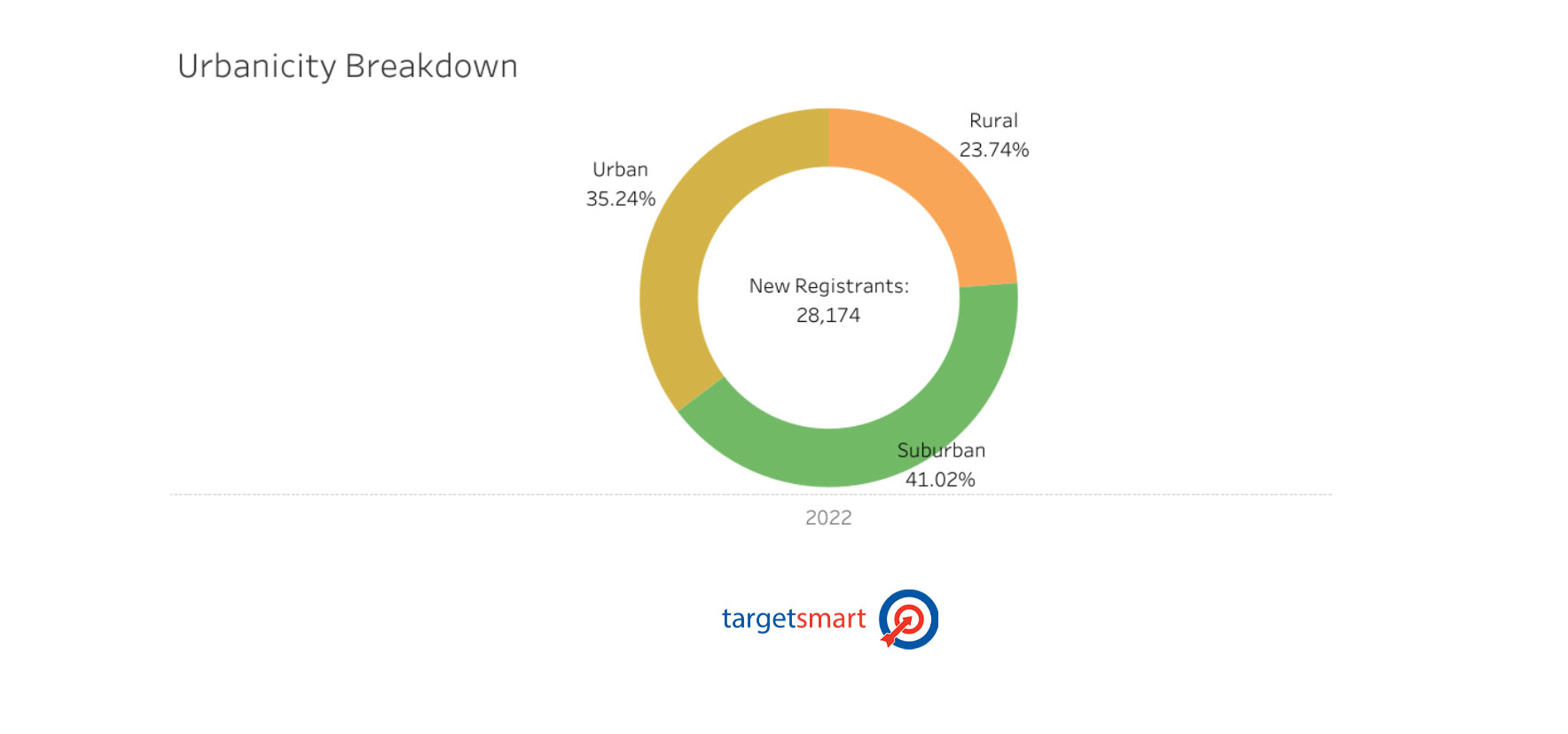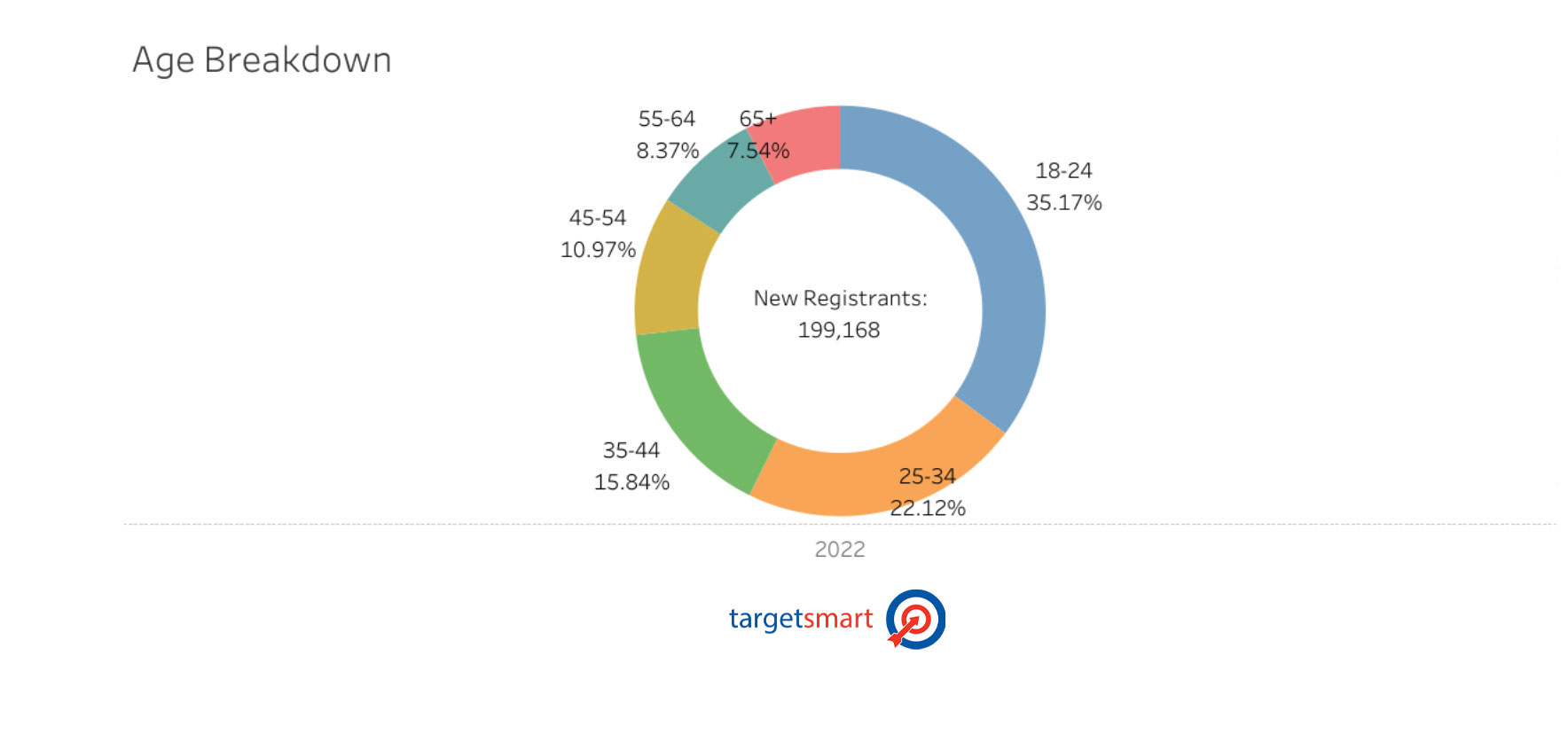Over the last month, we’ve shared analyses of the unprecedented number of women registering to vote in the wake of the Dobbs decision in places like Kansas, Wisconsin, and Michigan where not only is a woman’s right to choose under threat, but where the election this fall will decide control of the Senate. As we approach Election Day 2022, we’re seeing trends in addition to a motivated female electorate that have to make Democrats feel better about their chances in November. We know women are registering to vote in record numbers, but we’re also seeing similar trends in key battlegrounds as more Democrats, young people and urban voters are registering to vote as well, suggesting that the Dobbs decision wasn’t only a motivator for women.
Pennsylvania
In Pennsylvania, former Lt. Governor John Fetterman has a 9 point lead over Dr. Oz, according to the most recent 538 polling average. If Democrats want to hang on to their majority in the Senate, they’ll need to flip this seat. It’s a state where women have accounted for 56% of new registrants since June 24, the day the Supreme Court’s Dobbs decision was released.
- Amongst those newly registered female voters, 62% of them are Democratic compared to 15% Republican. Even more, 54% of them are under the age of 25. Comparatively, 41% of new male registrants are under the age of 25, with 43% Democratic and 28% Republican.
- Democrats rely on urban and suburban voters to deliver them victories, especially in Pennsylvania, and since June 24, these groups have accounted for 76.26% of all new registrants, with the remaining 23.74% being rural voters.
- Since 2020, the number of rural voters have decreased 9 percentage points, while suburban voters have changed +2 points and urban voters +7 points.
- Even more telling, among all new registrants since June 24, Dems have a 30% advantage, compared to a 4% percent advantage pre-Dobbs.

Ohio
The Senate race in Ohio is sure to be one of the most pivotal in deciding the fate of the Senate majority, with Rep. Tim Ryan (D) facing off against Trump loyalist J.D. Vance (R). As of writing, Ryan is polling ahead of Vance by one point, according to the latest 538 average.
- Since the Dobbs decision on 6/24, women have out-registered men by an 11 pt margin.
- Of note, Ohio doesn't have party registration, so we rely on TargetSmart modeling in order to identify party affiliation. During the ‘20 election cycle in Ohio, women were modeled to be +5 GOP. Since the Dobbs decision, they have been modeled to be +15 Democratic.
- Also, these new registrants are younger. 55% of the women who have registered in Ohio since Dobbs are under the age of 35. In 2020, 48% of the women who registered to vote were under 35.
- And in terms of where they live, suburban and urban voters have accounted for 81.53% of all new registrants since 6/24.
Texas
Can Beto O’Rourke defy the odds and oust incumbent MAGA Republican Greg Abbott from office to become the first Democrat to serve as Governor of Texas in over 25 years? The latest average from 538 has Beto polling behind Abbot by almost 9 points, but we’ve identified a few trends that may work in the former Congressman’s favor.
- Looking at modeled partisanship of new registrants since 6/24, Democrats have seen a 10 point advantage. Prior to the Dobbs decision, the GOP had a 5 point advantage amongst new registrants.
- Voters under the age of 25 accounted for 29% of new registrants this year, pre-Dobbs. Since Dobbs, those young voters comprise 37% of new voter registrations.
- It's clear that those younger voters who are registering now are far more Democratic. New registrants younger than 25 pre-Dobbs were modeled at +5 Dem. Since Dobbs, they are +20 Dem.

The trends we have been seeing in the female electorate are being replicated across young voters, urban and suburban voters, and all new registrants in general, especially in the states where the most will be at stake this fall. It’s clear that the Dobbs decision has fired up women, but we’re starting to see that it’s energized the Democratic base more broadly. As we approach the midterms on November 8th, we’ll continue to analyze the data and share what we’re seeing. Stay tuned and follow along @TBonier, @TargetSmart, or email me directly with questions or feedback.